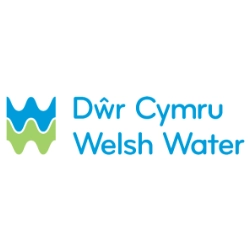Talk to an Expert
Complete this form and an 8x8 sales specialist will reach out to you shortly.
Welsh Water is a not-for-profit company which supplies drinking water and wastewater services to most of Wales and parts of western England that border Wales. It serves around 1.4 million households and businesses, totaling around three million people, providing them with approximately 830 million liters of drinking water per day.

"Bringing in 8x8’s Video Interaction solution means that we can perform better triage."
Welsh Water supplies one of the world’s most diverse geographical regions with more than 830 million liters of drinking water per day through a pipe network that, if laid out end-to-end, would reach from the UK to Australia and back again–twice.
This diverse terrain comes with a number of challenges for customer support. One of the most common tasks is triaging customer issues, particularly around leaking or burst pipes. Often, the customer may not be able to articulate the scale of the problem or provide an accurate diagnosis. “Our teams can diagnose problems really quickly once they can see what is going on, it’s much more difficult when the customer needs to relay information over the phone” says Peter O’Hanlon, Welsh Water’s Head of Delivery for Customer Strategy.
Due to a lack of visual data, there have also been situations where Welsh Water staff have arrived to fix an issue, but they’ve been unable to do so because they have not brought the correct tools to fix the problem, or they’ve discovered that the problem wasn’t one for Welsh Water to resolve. Each trip can not only cost multiple hours in work-time, but due to some of the remote areas serviced by Welsh Water, there is also a significant financial impact in unnecessarily traveling to properties.
Welsh Water needed a solution that would allow them to help customers, prevent misunderstandings, and allow for a superior level of service, while also minimizing wastage of both manpower and finances.
As the Welsh Water team looked for solutions, their research led them to discovering that not only 8×8 had been used by another water utility, but that the 8×8 video solution may solve a lot of their problems.
Traditionally, Welsh Water’s Operations Team would use phone, email, and letters as their main channels of engagement. While that worked for a lot of standard customer discussions around billing and change of address, when it came to customer issues, such as leaks, burst pipes and resolution responsibility queries, they needed a real-time visual channel that could give them a clear picture of the problem.
Welsh Water adopted 8×8’s Video Interaction CPaaS solution. This enables real-time video experiences between customers calling in and the company’s clean and wastewater teams. When an issue can be fixed by the customer during a video call, Welsh Water is able to avoid sending out repair teams unnecessarily, and it can then allocate those resources faster to the customers who need them.
“There’s always a lot of work for our teams, so we want to ensure the most efficient use of their time while also maximizing customer satisfaction,” says O’Hanlon. “Bringing in the 8×8 Video Interaction solution to this means that we can perform better triage. We can minimize disappointing customers while also resolving issues more quickly.”
8×8 Video Interaction makes it easier for Welsh Water to not only diagnose a problem, but also judge its severity and priority, and develop an appropriate plan to address it. Their agents can easily record interactions, take screen captures and make real-time annotations, with everything logged in the customer portal for future reference.
Welsh Water have seen a number of benefits from switching to 8×8, including:
Laura Gosling, Project Lead at Welsh Water, says: “We’ve worked closely with the teams, taking the time to educate them on how the video calls will save them time and effort over the long term.”
O’Hanlon adds: “For me, the benefits we are seeing just now with 8×8 are only the beginning. We’re continuing to focus on increasing the adoption of the platform, and I’ve no doubt we’ll see more benefits in the long run.“
Complete this form and an 8x8 sales specialist will reach out to you shortly.